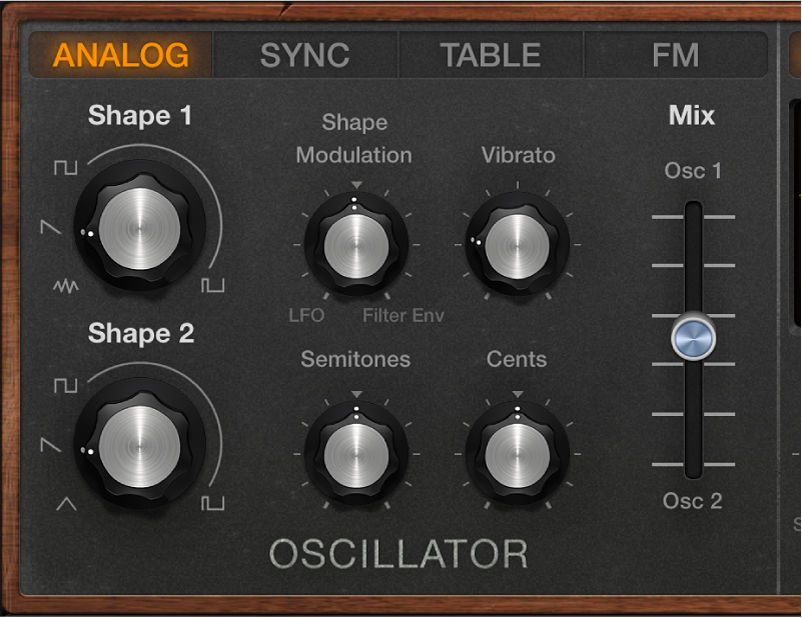An oscillator generates waveforms, while a synthesizer creates sounds from waveforms. Oscillators produce continuous signals of different shapes, frequencies, and amplitudes, whereas synthesizers can produce and modify different sounds based on an input waveform.
Oscillators and synthesizers are two essential components in electronic music production. They enable musicians and producers to create unique sounds, providing a diverse range of sounds required in various genres of electronic music. Understanding the difference between the two components is essential in creating electronic music and can help in designing and selecting the right equipment.
This article explores the differences between oscillators and synthesizers, providing an in-depth analysis of each component’s functionalities, purposes, and applications in electronic music production. Suppose you’re a music producer, enthusiast or curious about electronic music. In that case, you will find this article educational and informative.

Credit: support.apple.com
What Is An Oscillator?
An oscillator is an electronic device that generates a periodic signal. A synthesizer, on the other hand, is a musical instrument that produces sound by generating and combining different waveforms. The main difference between the two is that an oscillator is a basic electronic component used in various devices, while a synthesizer is a musical instrument specifically designed for music production purposes.
An oscillator is an electronic circuit that produces a repetitive signal without any external input. In other words, it generates a periodic signal on its own, usually a sine wave or a square wave. Oscillators are used in various electronic devices, including radios, televisions, and computers and are a fundamental building block of many electronic circuits.
Definition Of An Oscillator
An oscillator is an electronic circuit that produces a continuous output signal with a constant frequency and amplitude without any external input signal. In simpler terms, it is a device that vibrates or fluctuates at a specific frequency, producing an output signal that can be amplified and used for various purposes.
Types Of Oscillators
There are different types of oscillator circuits available, each having its own set of characteristics, and can be broadly classified as follows:
- Harmonic Oscillator
- Relaxation Oscillator
- Crystal Oscillator
- Tunable Oscillator
Harmonic and Relaxation oscillators generate periodic signals, while the crystal oscillator uses a quartz crystal resonator to generate a precise frequency. A tunable oscillator allows the frequency to be altered during operation.
Applications Of Oscillators
Oscillators are widely used in various electronic equipment and devices, including:
- Radios and televisions
- Computers and mobile devices
- Clocks and watches
- GPS systems
- Radars and communication systems
Oscillators are also used in scientific experiments, such as in the measurement of time and frequency, and in the production of musical tones in electronic keyboards and synthesizers. Overall, oscillators play a crucial role in the electronic industry, and their precise and continuous signals are vital for the functioning of many electronic devices.

Credit: www.sweetwater.com
What Is A Synthesizer?
What is a Synthesizer?
A synthesizer is an electronic musical instrument that generates audio signals. It can mimic almost any sound to create new sounds by combining two or more frequencies. A synthesizer can be used to create a variety of sounds, including drums, bass, piano, and guitar. Synthesizers originally emerged in the 1960s as a way to create electronic music with greater complexity and variety.
Definition Of A Synthesizer
A synthesizer is an electronic musical instrument that generates audio signals. It produces sound by converting electronic signals into audio waves. These signals are generated using various methods, such as voltage-controlled oscillators or digital audio processing. The different components of a synthesizer work in tandem to create unique sounds that are distinct from traditional acoustic instruments.
Types Of Synthesizers
There are many types of synthesizers available that use different methods to produce sound. Some of the most popular types include:
- Analog Synthesizer
- FM Synthesizer
- Modular Synthesizer
- Sampling Synthesizer
Each type of synthesizer has its own set of advantages and disadvantages depending on the intended use and individual preferences. For example, an analog synthesizer is often favored by musicians who prefer a warm, organic sound, while a digital or sampling synthesizer is better suited for those who require a wider range of sounds and effects.
Applications Of Synthesizers
Synthesizers are widely used in music production, live performance, and sound design. They are particularly popular in electronic and dance music genres, where they are used to create complex, layered sounds that cannot be achieved with traditional instruments. Synthesizers are also used in film and television production, as well as in video game sound design. With the advancements in technology and software, musical compositions created using synthesizers are constantly evolving.
Differences Between Oscillators And Synthesizers
Oscillators and synthesizers are both commonly used in music production, but they serve different purposes. Oscillators generate a single waveform, while synthesizers use oscillators to create complex sounds by manipulating waveforms and adding effects. This results in a wider range of sound possibilities with synthesizers.
Differences between Oscillators and Synthesizers Basic functions of oscillators and synthesizers Oscillators and synthesizers are both electronic instruments used to generate soundwaves. Oscillators produce a basic waveform, while synthesizers combine multiple waveforms to create a more complex sound. Oscillators are often used in simple electronic devices such as alarm clocks, while synthesizers are more commonly found in professional or advanced musical instruments. Design and architecture of oscillators and synthesizers The design and architecture of oscillators and synthesizers are different. Oscillators may be simple or complex, while synthesizers must have a microprocessor and electronic components to generate multiple waveforms. Oscillators typically consist of a small electronic circuit that generates a waveform, while synthesizers have many additional components, such as an amplifier, filter, and envelope generator. Waveforms and frequency control The waveforms generated by oscillators are generally limited to simple ones such as sine waves, square waves, and sawtooth waves. On the other hand, synthesizers have the ability to produce a wider range of waveforms, including pulse waves, triangle waves, and sample-based waveforms. Oscillators have simple frequency control, while synthesizers have more advanced control over variables such as pitch, modulation, and filter settings. Output options of oscillators and synthesizers Oscillators typically have only a single output option, which is an audio signal that can be sent to a speaker or amplifier. Synthesizers, on the other hand, have multiple output options, including MIDI, USB, and recording capabilities. This added flexibility allows synthesizers to be used in a wider range of musical applications. In conclusion, oscillators and synthesizers may seem similar as they generate soundwaves, but their functions, architectures, waveforms, and output options differ significantly. While oscillators are better suited for simple electronic devices, synthesizers are better equipped for professional music production and advanced sound manipulation. Understanding the differences between these two electronic instruments can help you make an informed decision when choosing the right device for your specific application.

Credit: m.youtube.com
Frequently Asked Questions On What Is The Difference Between Oscillator And Synthesizer
What Is The Difference Between Oscillators And Synths?
Oscillators generate waveforms, while synths use oscillators to create and modify different sounds. Oscillators create basic wave shapes, while synths can use filters, effects, and envelopes to produce unique sounds.
What Are The Different Types Of Oscillators In Synthesizers?
Synthesizers have different types of oscillators that generate sound waves – the primary sound source. The most common types are analog, digital, and wavetable oscillators. Analog produces smooth and warm sounds while digital offers precise tuning and stability. Wavetable combines different waveforms and has a diverse range of sounds.
What Does An Oscillator Do?
An oscillator produces an electronic signal of a specific frequency. It is an electronic circuit that generates a repetitive waveform without an input signal. The output generated by an oscillator can be used for a variety of purposes, including timekeeping, radio wave emission, and electronic music.
What Do Oscillators Do In Music?
Oscillators in music generate electronic waveforms that help create sound. They produce a repeating signal at a constant frequency that can be manipulated to create different sounds, such as those produced by synthesizers. These signals can be used to create melodies, harmonies, or sound effects.
Conclusion
Overall, the difference between an oscillator and a synthesizer is quite significant. While both produce sound, an oscillator generates a waveform that can be manipulated through various parameters, while a synthesizer uses oscillators and other sound sources to create complex sounds through an intricate processing chain.
Understanding these differences is essential for selecting the right equipment and creating the desired sonic results. With this knowledge, sound designers and musicians can make informed choices about their equipment and produce dynamic, engaging music.